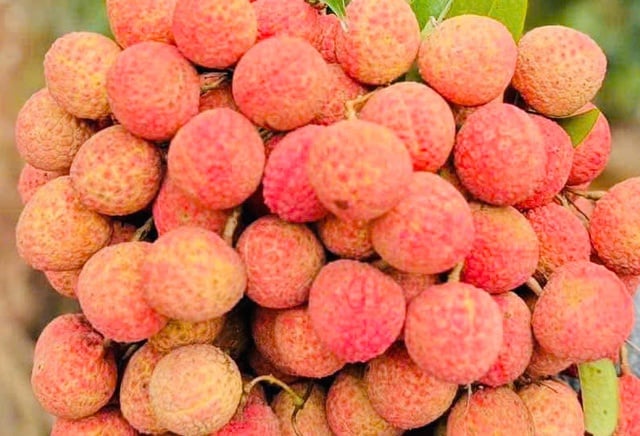Specialist Doctor 2 Huynh Tan Vu (Day Treatment Unit, University of Medicine and Pharmacy Hospital, Ho Chi Minh City - Facility 3) said that lychee is a typical summer fruit in our country, usually harvested in May and June. With its characteristic sweet, fresh, and healthy taste, lychee has become one of the most popular fruits to enjoy. However, although lychee is a favorite dish of many people, eating too much lychee, especially sweet, frozen lychee, can pose potential health risks if not used properly.
In oriental medicine, lychee flesh is sweet, sour, and neutral. According to modern medical research, lychee flesh contains a lot of water, glucose, protein, fat, vitamin C (an average of 40 mg of vitamin C in 100 g of fruit pulp), vitamin A, B, citric acid, copper, iron, potassium, etc. Choosing, using, and processing lychee properly helps you and your family stay healthy.
Notes when using lychee
Do not eat too much lychee at once, leading to heat, dry mouth, sore throat, nausea... Normal people should not eat more than 5-10 fruits at a time, pregnant women and children should eat 3-4 fruits/time. New mothers who are breastfeeding should only eat 100-200g if they want to eat. Women before and during menstruation should limit eating too much lychee.
- Do not eat when hungry: Easily causes hypoglycemia, especially in young children.
- People with diabetes: Should eat lychee in moderation because lychee has high sugar content.
"In addition, lychee can cause allergic reactions in some people. Some people who eat lychee get food poisoning (hangover, hives, severe stomach pain, etc.) not because of the lychee itself but because of a poisonous fungus Candida tropicalis often found in the knobs of overripe, crushed, rotten lychees. Therefore, you need to pay attention if you see unusual changes in the quality of the fruit or if it is damaged," Dr. Vu emphasized.
- People with chickenpox, phlegm or colds should not eat lychee because it will make the condition worse.
- Avoid using with alcohol or spicy foods: May increase heat, causing adverse reactions.

When choosing lychees, choose ones with bright red skin, no cracks or signs of damage.
PHOTO. LC
How to use and preserve lychee
There are many ways to use lychee, which can be used to diversify the choices:
- Eat fresh: This is a great option to enjoy lychee immediately without spending much time and effort preparing it.
- Smoothies or juices: Pureed lychees can be made into smoothies or juiced to drink, giving you a delicious, nutritious drink in the summer.
- Desserts: Jelly, ice cream, lychee sweet soup,... are attractive and cool desserts. Processed as main dishes such as lychee salad, stir-fried lychee with meat,... are very easy to prepare, both enhancing the flavor and diversifying the menu for family meals.
How to preserve lychee
When buying lychees, choose those with bright red skin, without cracks or signs of damage. Lychees stored in the refrigerator will be fresher and sweeter. In addition, you can also put the lychees in a sealed bag or box and store them at 0-4 degrees Celsius in the refrigerator for later use. Dried lychees can be stored for up to 1 year at room temperature. Choose fresh, red and plump lychees to ensure the best flavor.
"Frozen lychees are convenient for year-round use, still retaining most of their flavor and nutrition. However, this is still a fruit with a lot of sugar and high energy. Whether eaten in winter or summer, fresh or frozen, the most important thing is still a reasonable amount and the right user," Dr. Vu shared.
Source: https://thanhnien.vn/vi-sao-qua-vai-chin-qua-nut-ne-khong-nen-an-ma-phai-vut-di-18525062215215696.htm






























































































Comment (0)